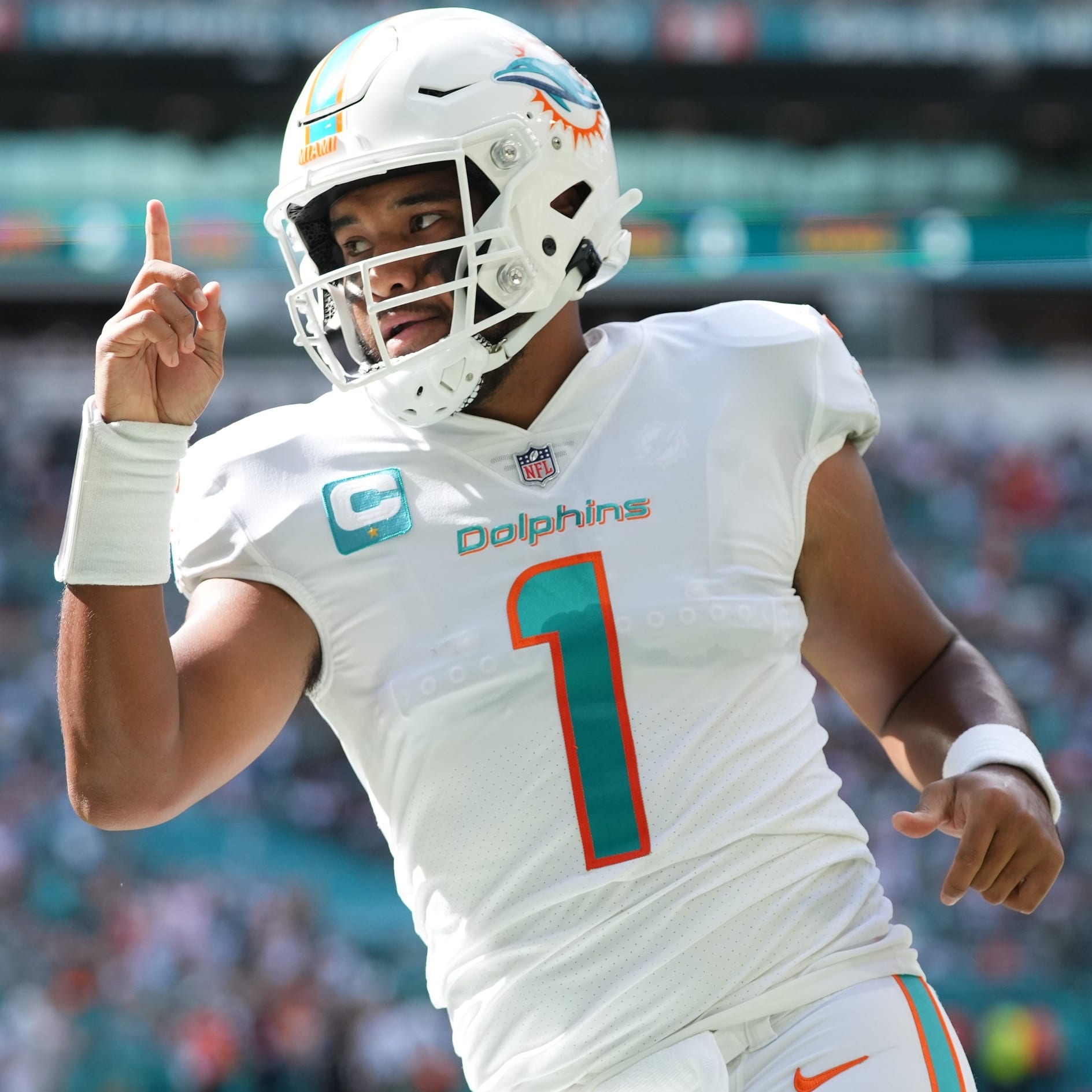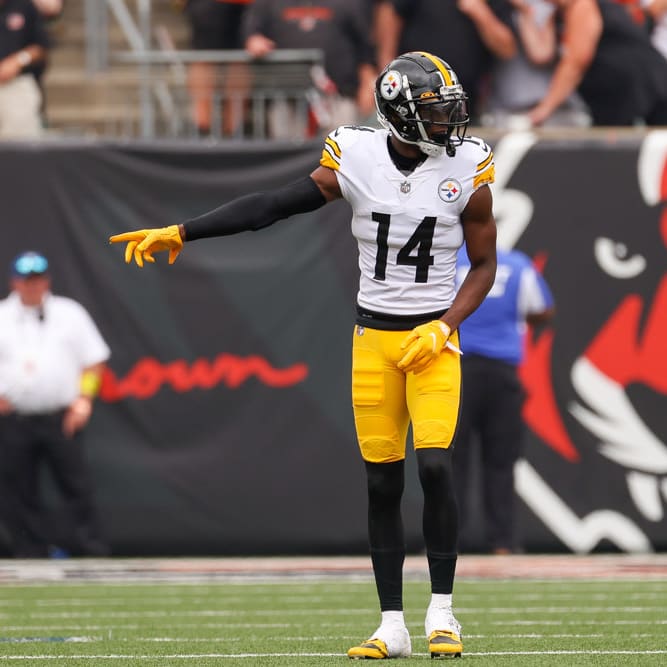This article is part of our Injury Analysis series.
It didn't take long for the first impactful injury of training camp to occur, as the Bengals wide receiver crumpled to the turf after getting tangled up with a defender during the team's first practice. Green suffered a sprained left ankle on the play and an MRI later confirmed significant ligament damage.
While the injury is unfortunate, it does provide me the opportunity to provide fantasy owners with my annual refresher on the details regarding ankle injuries and how these types of injuries are graded.
The true ankle comprises three bones, the tibia and fibula of the lower leg and the talus of the foot. However, the functional unit that is the ankle actually comprises three different joints, the talocrural joint, the subtalar joint and the distal tibiofibular (tib-fib) joint.
The talocrural joint is the joint most people associate with the ankle. It's formed by the tibia, fibula and talus, and is involved with the up-and-down movement of the ankle. The joint is stabilized by ligaments located on both sides of the leg and foot. On the inside, or medial aspect, of the ankle is the strong deltoid ligament that prevents excessive inward movement or eversion. Three additional ligaments are located on the lateral or outside of the ankle. This trio of ligaments is the most vulnerable to injury and is most commonly sprained when the ankle is forced into a direction known as inversion following an awkward step or when landing on the foot of another player. Most
It didn't take long for the first impactful injury of training camp to occur, as the Bengals wide receiver crumpled to the turf after getting tangled up with a defender during the team's first practice. Green suffered a sprained left ankle on the play and an MRI later confirmed significant ligament damage.
While the injury is unfortunate, it does provide me the opportunity to provide fantasy owners with my annual refresher on the details regarding ankle injuries and how these types of injuries are graded.
The true ankle comprises three bones, the tibia and fibula of the lower leg and the talus of the foot. However, the functional unit that is the ankle actually comprises three different joints, the talocrural joint, the subtalar joint and the distal tibiofibular (tib-fib) joint.
The talocrural joint is the joint most people associate with the ankle. It's formed by the tibia, fibula and talus, and is involved with the up-and-down movement of the ankle. The joint is stabilized by ligaments located on both sides of the leg and foot. On the inside, or medial aspect, of the ankle is the strong deltoid ligament that prevents excessive inward movement or eversion. Three additional ligaments are located on the lateral or outside of the ankle. This trio of ligaments is the most vulnerable to injury and is most commonly sprained when the ankle is forced into a direction known as inversion following an awkward step or when landing on the foot of another player. Most ankle sprains occur in this area.
The subtalar joint is formed between the talus and the calcaneus (the heel bone). This joint is responsible for the lateral (side-to-side) motions. Mobility here is key for fluid movement. Unfortunately, subtalar instability often accompanies a "normal" lateral ankle sprain.
The final joint included in the ankle is the distal tib-fib. This joint sits at the bottom of the leg, where the tibia and fibula join with the talus. The interosseous ligament, a particularly strong and durable ligament, stretches across the joint to connect the two lower leg bones. Two more ligaments, the anterior and posterior tibiofibular ligaments, assist in stabilizing the ankle mortise. Any injury to one of these structures is classified as a "high ankle" or syndesmotic sprain. High ankle sprains often require longer recovery windows.
Ankle sprains, like most ligament injuries, are often graded based on severity of damage.
A mild or Grade 1 ankle sprain is marked by tearing of the microfibers of the ligament. However, the overall integrity of the ligament remains largely intact. Athletes with Grade 1 sprains may not even miss a game.
A Grade 2 sprain occurs when individual fibers of the ligament fail and is often referred to as a moderate sprain or a partial tear. Grade 2 sprains are often more painful and functionally limiting. The associated symptoms, like pain and swelling, are more severe as well.
Any injury receiving a Grade 3 or higher designation is considered a severe injury and often means the entire ligament tore. These injuries generally result in a total loss of function and stability. Grade 3 sprains often require a substantial amount of time off and, in some rare cases, surgical intervention.
Green's injury is likely a Grade 2 or 3, as reports have stated he suffered torn ligaments. He is slated to miss at least six weeks, meaning he is unlikely to see any preseason action, and his status for the start of the regular season is in doubt. He will return with an elevated level of risk, and it won't be surprising if the team opts to limit his practice reps for a majority of the year. Green is worth downgrading on all draft boards, but he will still carry considerable upside and could be a nice grab for an opportunistic fantasy owner.
Turf Burns
Julian Edelman : The Super Bowl MVP is recovering from a fractured thumb sustained a few weeks before the start of camp. Fortunately, it appears as though surgery wasn't needed, and the associated ligament damage was limited. Bone tissue is capable of returning to its pre-injury strength when given the appropriate amount of time, meaning the timing of the injury could prove advantageous. The thumb should heal fast enough for Edelman to get some late preseason reps if needed and shouldn't impact his Week 1 availability. As a result, Edelman's draft day stock remains unaffected.
: The Super Bowl MVP is recovering from a fractured thumb sustained a few weeks before the start of camp. Fortunately, it appears as though surgery wasn't needed, and the associated ligament damage was limited. Bone tissue is capable of returning to its pre-injury strength when given the appropriate amount of time, meaning the timing of the injury could prove advantageous. The thumb should heal fast enough for Edelman to get some late preseason reps if needed and shouldn't impact his Week 1 availability. As a result, Edelman's draft day stock remains unaffected.
Derrick Henry : An undisclosed lower leg injury has kept Henry on the sidelines and in a walking boot. The Titans are describing the injury as minor, though details remain limited. It's not worth panicking just yet, but it is worth keeping a close eye on his status as the week progresses.
: An undisclosed lower leg injury has kept Henry on the sidelines and in a walking boot. The Titans are describing the injury as minor, though details remain limited. It's not worth panicking just yet, but it is worth keeping a close eye on his status as the week progresses.
Cam Newton : The Panthers quarterback did not participate in passing drills Saturday as he works his way back from offseason shoulder surgery. The decision to limit Newton's throwing reps was part of a recovery program designed to limit the wear-and-tear on his shoulder during the preseason. Look for this "pitch count" to continue for the remainder of camp, and it wouldn't be shocking to see it carry over into the regular season. Newton should be in line for a bounce back year after ending the season in disappointing fashion.
: The Panthers quarterback did not participate in passing drills Saturday as he works his way back from offseason shoulder surgery. The decision to limit Newton's throwing reps was part of a recovery program designed to limit the wear-and-tear on his shoulder during the preseason. Look for this "pitch count" to continue for the remainder of camp, and it wouldn't be shocking to see it carry over into the regular season. Newton should be in line for a bounce back year after ending the season in disappointing fashion.
John Ross : Ross was unable to take advantage of Green's absence, as he sat out a recent practice with hamstring tightness. The team is downplaying the severity of the issue but suggested he could miss up to a week. Hamstring injuries are notoriously problematic for wide receivers, especially speed-dependent ones, and a cautious approach is likely the best approach.
: Ross was unable to take advantage of Green's absence, as he sat out a recent practice with hamstring tightness. The team is downplaying the severity of the issue but suggested he could miss up to a week. Hamstring injuries are notoriously problematic for wide receivers, especially speed-dependent ones, and a cautious approach is likely the best approach.
Sterling Shepard : The Giants wide receiver also broke his thumb but could be hard-pressed to play in Week 1. Shepard's injury occurred in the first practice of training camp and will limit him for the remainder of the summer. Like Edelman, he avoided any serious ligament damage and won't require surgery. He will continue to work out and run routes, but will be limited in his time on the field. New York is likely to take an even more cautious approach with Shepard's health after Golden Tate's suspension and Corey Coleman's season-ending ACL tear.
: The Giants wide receiver also broke his thumb but could be hard-pressed to play in Week 1. Shepard's injury occurred in the first practice of training camp and will limit him for the remainder of the summer. Like Edelman, he avoided any serious ligament damage and won't require surgery. He will continue to work out and run routes, but will be limited in his time on the field. New York is likely to take an even more cautious approach with Shepard's health after Golden Tate's suspension and Corey Coleman's season-ending ACL tear.










